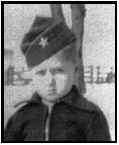
|
Recent news that a 12 minute silent film by the late Wallace Kelly of Lebanon, Ky., had been selected for the Library of Congress National Film Registry certainly shouldn’t surprise anybody who knew Mr. Kelly. Everything Wallace did was good, from painting to woodcuts to the crafting of a major novel, “Days Are as Grass” in 1941. His silent film, “Our Day,” was chosen for its artistic excellence and editing, a home movie that ranks up there with “Close Encounters of the Third Kind,” also selected for the Film Registry. I knew Wallace Kelly from 1971 until his death in 1988. He and his wife, Mabel, were regulars at the Kentucky Guild Fairs in Berea and, later, the Berea Craft Festival, and as director of both I had no better advisor than Wallace Kelly. He was an old-fashioned artist, ethical and classical, one who thought as much about art as he worked at producing it. In our home hang several Kelly prints, including “One Gazing, One Grazing,” “Gaggle,” and the one I value most of all, “Dispossessed,” a woodcut of a depression era home sale. Mr. Kelly only pulled a dozen prints of “Dispossessed,” numbered and signed, and brought his very last copy to one of the fairs at Indian Fort Theater. I bought it, but another customer had driven miles to get a copy and I reluctantly told Mr. Kelly to give the prized piece to them. He did, but showed up a few weeks later with another copy, labeled “FOR GARRY BARKER” instead of numbered, and confessed that he’d broken his own and the art world’s rules to make it for me. I treasure the print. When I found out from somebody else that Wallace had written a book, one nominated for the Pulitzer Prize, I tracked down a copy of “Days Are as Grass” in the Berea College Library, one that hadn’t been checked out in over 30 years, and almost kept it. My conscience got the best of me, though, and now that copy is in the Special Archives at Berea. I was, last week, able to locate and order another copy from a bookseller on-line, so soon I’ll have my own copy. When my first book was published in 1983, Mr. Kelly wrote me a long and helpful letter, mostly with the wise advice to tone down the dialect and deliberately mis-spelled words in future writings. He had been criticized for trying to capture the local language in his book, he said, and wanted to save me from the same grief. Somewhere in the scattered files here in my home office are several such letters from Wallace Kelly, all wise and sincere, all filled with sage reckonings on the world of art. He also told me one day, at Berea, that he never expected to sell any high-priced artwork at a fair because most people couldn’t make a $300 decision without having their interior decorator on hand. He always wore a straw hat, and his hair and mustache were white even when I met him. There was a twinkle in his eye, but at first he was a very shy, reserved person. He loved his Kentucky roots and life, had no ambitions to leave, ever, and doted on his daughter, Martha. It was her effort that got exposure for the short film, which now will be forever a part of American history. I’m proud to have known Wallace Kelly, to have been his friend, and to have his artworks where I can see them every day and remember him. Now I want to see the movie. |

|
Being what was called a “War Baby” the author wore cut-down Army and Navy clothing for many years, and heard first-hand stories about combat from his father and uncles. One uncle spent over a year in a German POW camp, and another, a US Navy pilot, was lost. Much of Barker’s fiction is set during and immediately after those war years, a time when rural Eastern Kentucky was changing by leaps and bounds. That the culture survived is remarkable, and that new interest in Appalachian arts, literature, music, and people is drawing tourist to the region would have been, 40 years ago, unthinkable. |
|
Garry Barker’s HEAD OF THE HOLLER IV |

|
Puff, a Brittany Spaniel, was Garry Barker’s shadow for three years before being hit by a vehicle and killed. Puff is buried in the orchard and remembered every day. |